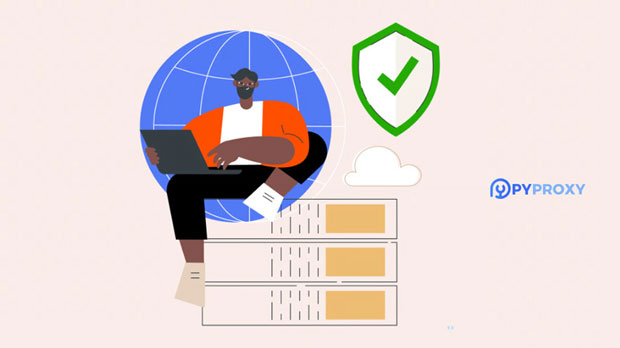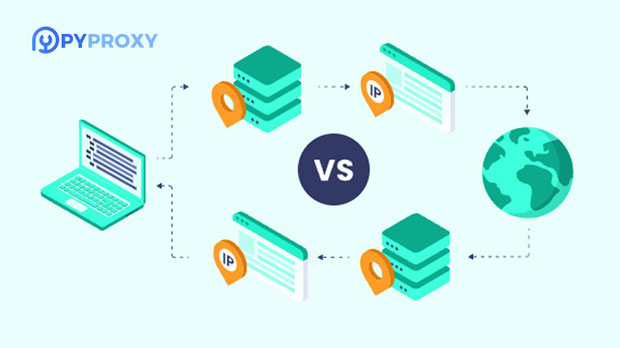Free residential socks5 proxies have become increasingly popular among internet users due to their accessibility and the flexibility they offer in terms of anonymity and bypassing geo-restrictions. However, when it comes to choosing a proxy for daily use, two critical factors come into play: speed and stability. These two elements are often interlinked and play a significant role in determining the overall user experience. This article aims to analyze the speed and stability of free residential SOCKS5 proxies, delving into their benefits, limitations, and how they compare to other types of proxies. Understanding SOCKS5 ProxiesBefore diving into an analysis of the speed and stability of free residential SOCKS5 proxies, it's essential to understand what SOCKS5 proxies are and how they function. SOCKS5 (Socket Secure version 5) is a protocol designed to route traffic between a client and a server, masking the user’s real IP address. This protocol is particularly favored because of its ability to handle various types of traffic, such as web browsing, gaming, and even peer-to-peer file sharing. SOCKS5 proxies are known for offering better performance compared to their predecessors (such as SOCKS4) as they support advanced features like authentication and UDP support. residential proxies, on the other hand, use IP addresses assigned by internet service providers (ISPs) to real homes, making them less detectable and more reliable compared to datacenter proxies. When combined with the SOCKS5 protocol, residential proxies provide users with high anonymity and the ability to circumvent geographical restrictions.Speed: A Critical Factor for Proxy PerformanceSpeed is one of the primary concerns when choosing a proxy. A proxy with high speed ensures smooth and efficient browsing, streaming, or gaming experiences. For free residential SOCKS5 proxies, speed is influenced by several factors, including the quality of the proxy server, the distance between the user and the server, network congestion, and the type of internet connection being used.1. Network Congestion: One of the key drawbacks of free residential SOCKS5 proxies is that they are often shared among multiple users. When too many users are connected to the same proxy server, the available bandwidth is divided among them, leading to slower speeds. Unlike paid services that often allocate dedicated proxies for individual use, free proxies tend to suffer from inconsistent speeds, especially during peak hours.2. Server Location and Latency: The physical location of the proxy server plays a significant role in determining speed. If the proxy server is located far from the user, there will be a higher latency, leading to slower connections. Free residential SOCKS5 proxies may have a limited number of servers spread across different regions, and in many cases, these servers are not strategically placed to minimize latency. As a result, users may experience high latency and slower speeds when connecting to distant servers.3. Bandwidth Limitations: Free residential proxies typically come with bandwidth restrictions, which can affect the speed of data transmission. When the available bandwidth is consumed quickly, users may experience throttled speeds or even disruptions in their connection. These limitations are usually not an issue with paid proxies, where providers often ensure higher bandwidth availability.4. ISP Throttling: Internet Service Providers (ISPs) sometimes impose throttling on certain types of internet traffic, such as streaming or torrenting. This can also affect the speed of free residential SOCKS5 proxies, especially if the ISP detects high traffic usage through proxy servers. Although SOCKS5 proxies generally help bypass geo-restrictions and offer privacy, they are not immune to throttling by ISPs.Stability: Ensuring Reliable Proxy PerformanceWhile speed is important, stability is just as critical for a seamless browsing experience. Stability refers to the ability of a proxy to maintain a consistent connection without frequent disconnections or interruptions. For users relying on free residential SOCKS5 proxies, stability can be a major concern.1. Reliability of Free Proxies: The stability of free residential SOCKS5 proxies often depends on the reliability of the servers that are being used. Since these proxies are free, many users share the same proxy pool, which can cause service interruptions, random disconnections, or unstable connections. The proxy provider may not have the resources to maintain a robust infrastructure, leading to more frequent downtimes or slow recovery from technical issues.2. Limited Server Availability: Free residential SOCKS5 proxies often have fewer servers available compared to paid services. This limited server pool can lead to increased congestion, especially if many users are trying to access the same server at once. When multiple users are sharing a server, the proxy may become less stable, leading to connection drops, latency spikes, and poor overall performance.3. Connection Timeouts and Errors: Due to the instability of free proxies, users may experience connection timeouts or errors more frequently. These issues occur when the proxy server is overloaded or unable to handle the user’s request promptly. Users may also encounter issues when the proxy server is unable to maintain a stable connection with the destination server, leading to delayed page loads, interrupted data transfers, or failed connections altogether.4. IP Pool Rotation: Free residential SOCKS5 proxies may also suffer from inconsistent IP pool rotation. If the proxy provider rotates the IP addresses too quickly or erratically, users may experience interrupted sessions or have their connections flagged as suspicious. This can be particularly problematic for activities such as web scraping, where consistent IP addresses are needed to avoid detection.Trade-Offs Between Speed, Stability, and CostWhen comparing free residential SOCKS5 proxies to their paid counterparts, there is a clear trade-off between speed, stability, and cost. Free proxies are attractive due to their zero cost, but they often come with compromises in terms of performance. Users who prioritize speed and stability may find free residential proxies to be insufficient for their needs, particularly for activities that require consistent and fast connections, such as online gaming, HD video streaming, or high-volume data scraping.On the other hand, users who need a simple solution for casual browsing or bypassing geo-restrictions may find free proxies acceptable, as long as they are aware of the potential limitations in speed and stability. Understanding these trade-offs is essential in deciding whether a free residential socks5 proxy meets the specific needs of a user.Conclusion: Weighing the Pros and Cons of Free Residential SOCKS5 ProxiesIn conclusion, free residential SOCKS5 proxies offer a convenient and cost-effective solution for users looking to mask their IP addresses or access geo-restricted content. However, they come with significant limitations in terms of speed and stability. While speed issues arise from server congestion, latency, and bandwidth restrictions, stability concerns stem from unreliable servers, frequent disconnections, and inconsistent IP rotations.For users who value speed and stability, free residential SOCKS5 proxies may not be the ideal choice, especially for high-demand tasks like streaming or data scraping. On the other hand, casual users with modest needs may find these proxies sufficient for their purposes, provided they understand the inherent trade-offs.Ultimately, whether to use a free residential SOCKS5 proxy depends on the user’s specific requirements, including the level of anonymity, speed, and reliability needed. For those seeking a more reliable and high-performing proxy experience, paid services may provide a more consistent and optimal solution.
Jan 07, 2025
![arrow]()




























































